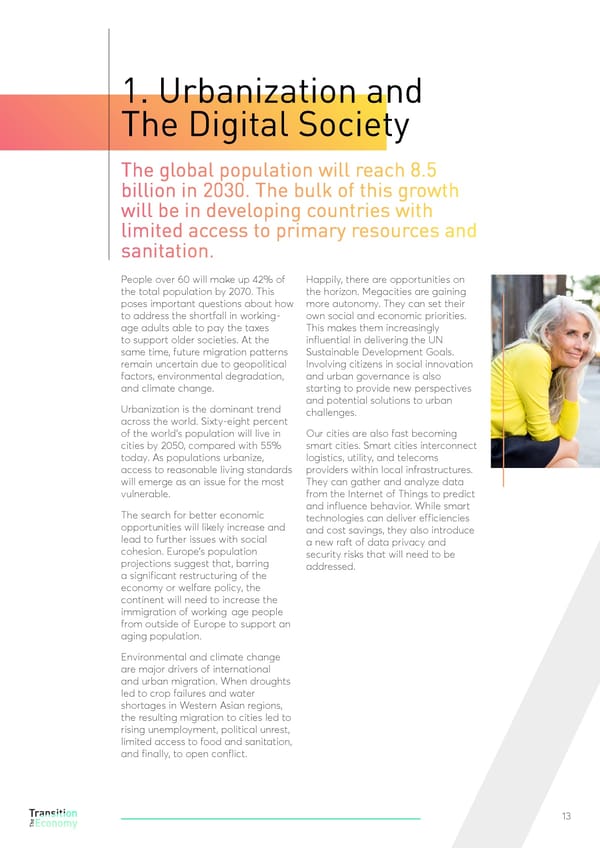1. Urbanization and The Digital Society The global population will reach 8.5 billion in 2030. The bulk of this growth will be in developing countries with limited access to primary resources and sanitation. People over 60 will make up 42% of Happily, there are opportunities on the total population by 2070. This the horizon. Megacities are gaining poses important questions about how more autonomy. They can set their to address the shortfall in working- own social and economic priorities. age adults able to pay the taxes This makes them increasingly to support older societies. At the influential in delivering the UN same time, future migration patterns Sustainable Development Goals. remain uncertain due to geopolitical Involving citizens in social innovation factors, environmental degradation, and urban governance is also and climate change. starting to provide new perspectives Urbanization is the dominant trend and potential solutions to urban across the world. Sixty-eight percent challenges. of the world’s population will live in Our cities are also fast becoming cities by 2050, compared with 55% smart cities. Smart cities interconnect today. As populations urbanize, logistics, utility, and telecoms access to reasonable living standards providers within local infrastructures. will emerge as an issue for the most They can gather and analyze data vulnerable. from the Internet of Things to predict The search for better economic and influence behavior. While smart opportunities will likely increase and technologies can deliver efficiencies lead to further issues with social and cost savings, they also introduce cohesion. Europe’s population a new raft of data privacy and projections suggest that, barring security risks that will need to be a significant restructuring of the addressed. economy or welfare policy, the continent will need to increase the immigration of working‐age people from outside of Europe to support an aging population. Environmental and climate change are major drivers of international and urban migration. When droughts led to crop failures and water shortages in Western Asian regions, the resulting migration to cities led to rising unemployment, political unrest, limited access to food and sanitation, and finally, to open conflict. 13
 The Transition Economy High Res Page 12 Page 14
The Transition Economy High Res Page 12 Page 14